Have you ever wondered what a dart frog eats in the wild? These little amphibians are living in the rainforests of Central and South America for thousands of years. And their diet consists of a large number of tiny insects that keeps the forest ecosystem running flawlessly. They always manage to adapt, it’s glorious if you think about it.
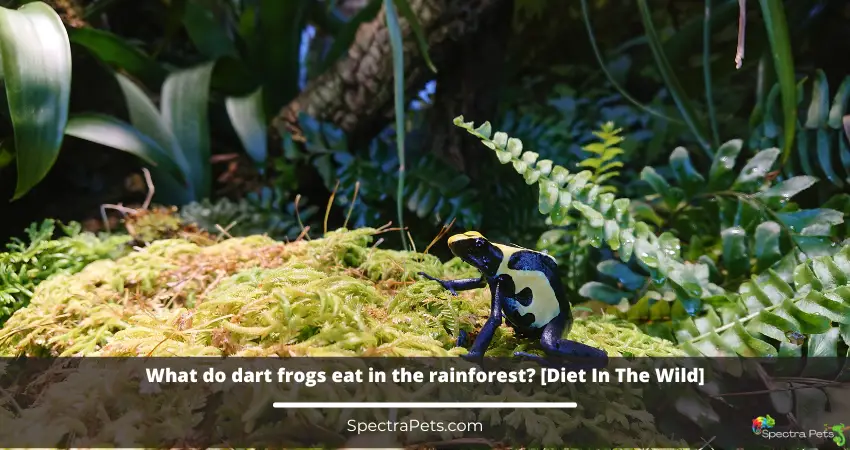
Poison dart frogs in their tadpole stages enjoy algae and micro plants. During their juvenile and adult period, these awesome animals eat mostly insects.
Let’s learn more about the diet of dart frogs in the rainforest and their diet…
The food that dart frog tadpoles like
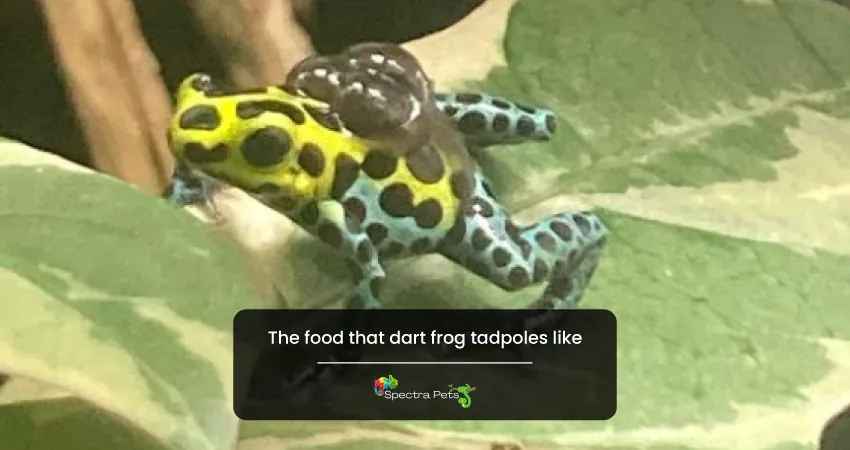
Image Credit: Instagram, rainforest_exotic_gems
Few animals are as uniquely adapted to their environment as the dart frog tadpole. These tiny amphibians are found in a variety of habitats, from jungle streams to rainforest ponds. Regardless of their location, all dart frog tadpoles share one key trait: they are voracious eaters.
In the wild, dart frog tadpoles typically consume a diet of microscopic plants and algae. However, they are not above eating small insects or even other tadpoles. Carrion is also an important part of their diet, as it provides essential nutrients that help them to grow and develop.

As they mature, dart frog tadpoles gradually transition to a diet of solid food. This shift usually occurs around the time they metamorphose into frogs. Given their wide range of food options, it is not surprising that tadpoles can survive in various habitats.
Because of having such a diverse diet, dart frog tadpoles must be extremely careful about what they eat. Consuming the wrong type of food can lead to illness or even death. Thus, these tiny amphibians must always be on the lookout for potential dangers lurking in their environment.
An adult dart frog’s diet
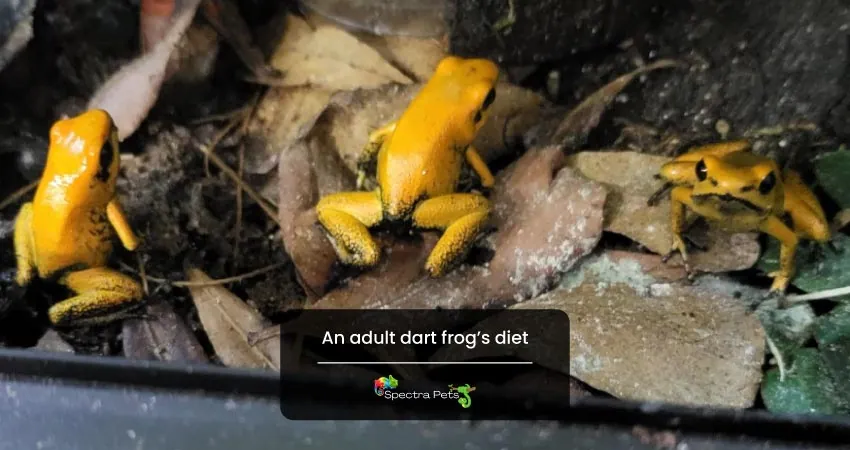
Image Credit: Instagram, concept_reptiles
Adult frogs consume a wider range of insects mostly occupied by the arthropods species. However, they do enjoy some meaty insects too. These voracious fast eaters get a load of toxins from eating versatile insects in their natural habitat.
Let’s take a deep look at what these buddies eat in the rainforest…
Ants
Dart frogs are opportunistic eaters and will typically consume whatever insects are readily available. However, their favorite food is ants. Dart frogs use their long tongues to lick up ants from the forest floor.
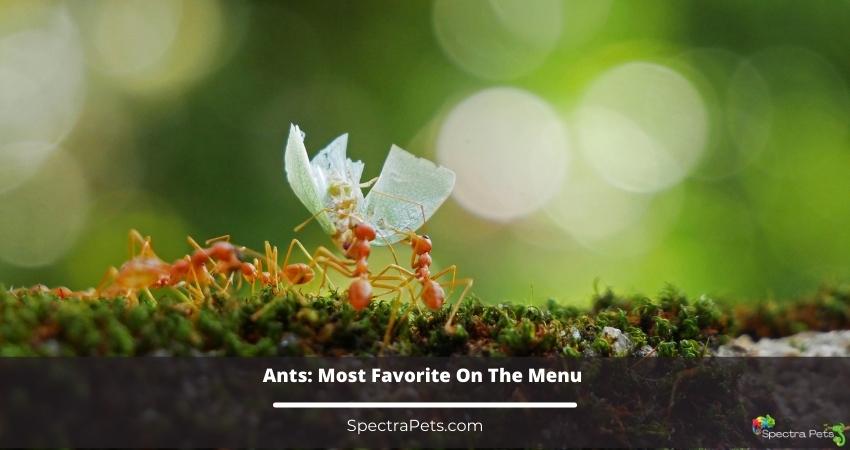
They also have special adaptations that allow them to stay dry while hunting in the rain. When a dart frog feels the first drops of rain, it will climb up into the trees to stay safe and dry. Once the storm has passed, the frog will return to the ground to continue its hunt for ants.
The dart frog’s unique diet and hunting habits make it an important part of the rainforest ecosystem. By eating ants, the frog helps to control the insect population and prevent damage to plant life. In turn, the plants provide food and shelter for the dart frog and other animals that call the rainforest home.
Spider & Locusts
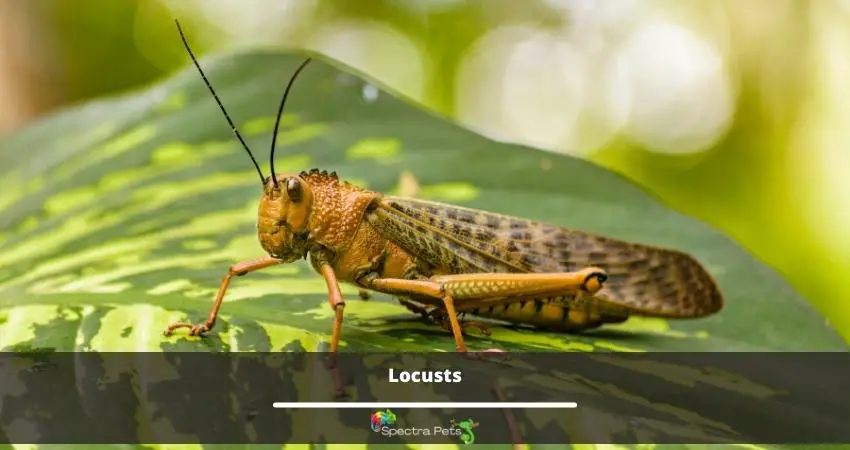
Although they are tiny, these fearless predators play an important role in the forest ecosystem by hunting spiders and locusts. Dart frogs use their long, sticky tongues to capture their prey, which they then subdue with poisonous venom. The frogs remain hidden during the day, waiting for nightfall when they emerge to hunt.
Caterpillars, Wasps, and Maggots
If you thought wasps, caterpillars, and maggots were only fit for the trash can, think again! These unsavory creatures are actually part of the diet of the rainforest dart frog. They need to eat these insects to stay healthy. Dart frogs are opportunistic feeders, meaning they will eat whatever insects are available to them.
The rainforest of South America is home to only dart frogs but also hundreds of species of cricket. Which mostly live on plants and hide under the leaf. On the forest floor and plants, dart frogs often hunt cricket as their meal.
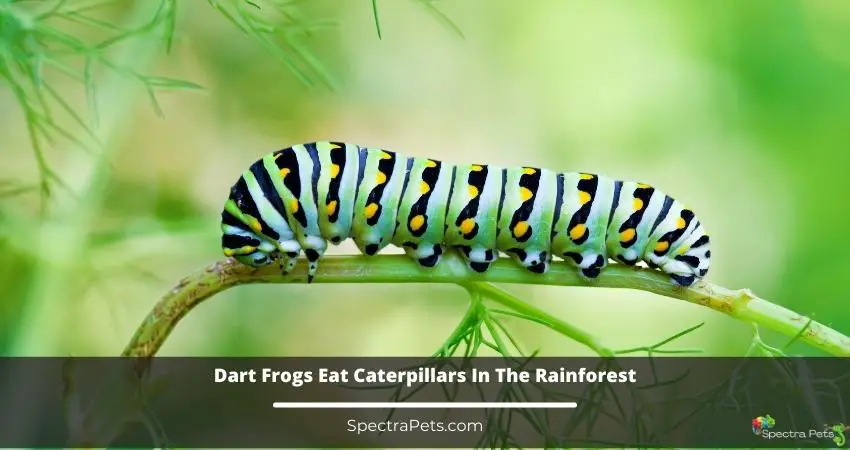
The presence of cricket in dart frogs’ diet makes it an ultra-nutrient-rich diet. However, their small size allows them to eat only little size crickets and cricket grows really fast which makes it harder for the frog to find out suitable size cricket on the forest floor.
Another excellent source of food of the poison dart frog is termite. This crispy meal is loaded with high protein and fats.
These insects have a significant share in the overall diet of a dart frog.
Diet of a juvenile dart frog in the Rainforest
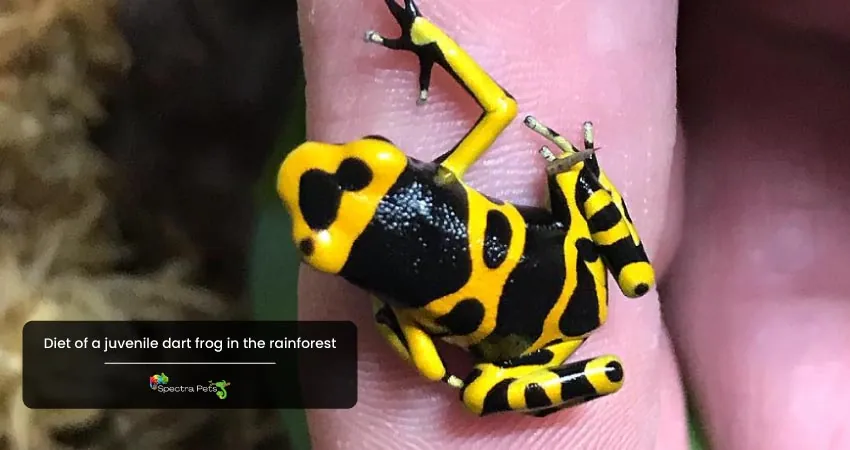
Image Credit: Instagram, thesnakepit_duluth
A juvenile dart frog’s diet consists mostly of small insects, such as ants, beetles, and flies. The frog will also eat the occasional spider or millipede. Dart frogs are opportunistic feeders, so they will also consume other small animals if they are available, such as mites, termites, and even small lizards.
The diet of a juvenile dart frog can vary depending on the location of the frog. For example, frogs living in areas with more leaf litter will likely consume more ants than those living in areas with less leaf litter.
Moreover, frogs living near water sources will also have a different diet than those living in dryer areas. This is because amphibians are able to absorb water through their skin, so they don’t need to drink as often as other animals.
As a result, frogs living near water sources will consume more insects than those living in dryer areas.
What helps the dart frog to enjoy a wider diet in the rainforest?
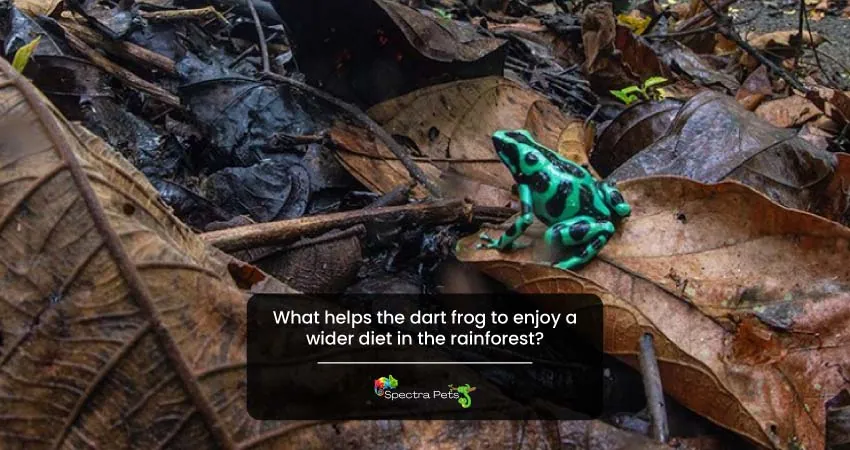
Image Credit: Instagram, wildlais
Dart frogs rarely miss their food once they fix the target. And there are some factors behind being their expert eaters.
I will show you the 3 main reasons that make them outstanding hunters…
Vision
Due to their excellent vision, these frogs can hunt both day and night time. They have a 180-degree eye movement ability that helps them to look at everything around them. Although they are not very good at looking at distances, they are damn good at looking at close ranges, which helps them hunt insects quickly.
Sticky Tongue
The dart frog takes the highest advantage of its sticky tongue. Because of this tongue most of the time, they are successful in hunting insects at close range.
Camouflage
Thanks to their mind-boggling bright skin that helps them to get lost and completely blend with the natural color. It helps dart frogs to be completely camouflaged in a certain place. Thus they stay immobile and when the prey comes nearby they don’t miss the opportunity to eat the insects.
Where do dart frog search for food for diet in the rainforest?
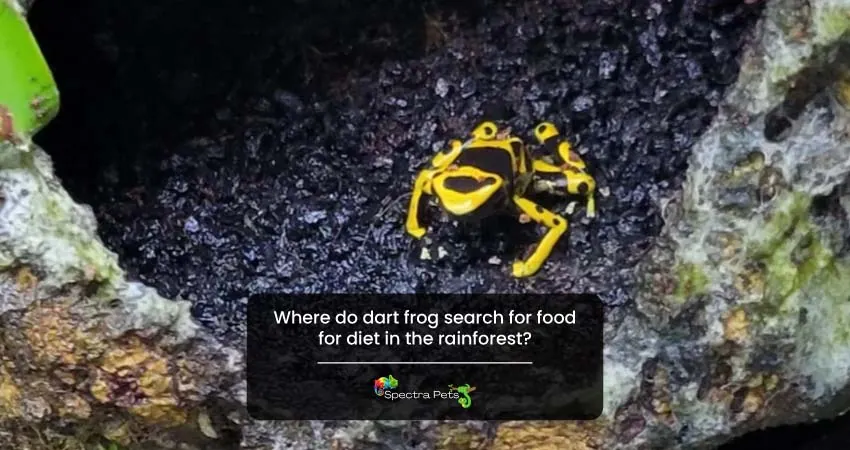
Image Credit: Instagram, duhangerymnky
A forest starts from the top of the canopy to the lower forest floor. Due to their outstanding climbing ability, poison dart frog hunts at different heights.
Sometimes they hunt on the forest floor. When they feel there is a lack of insects on the forest floor, they will jump to the branches and leaves of the trees and hunt for their food.
Do poison dart frogs eat other frogs?
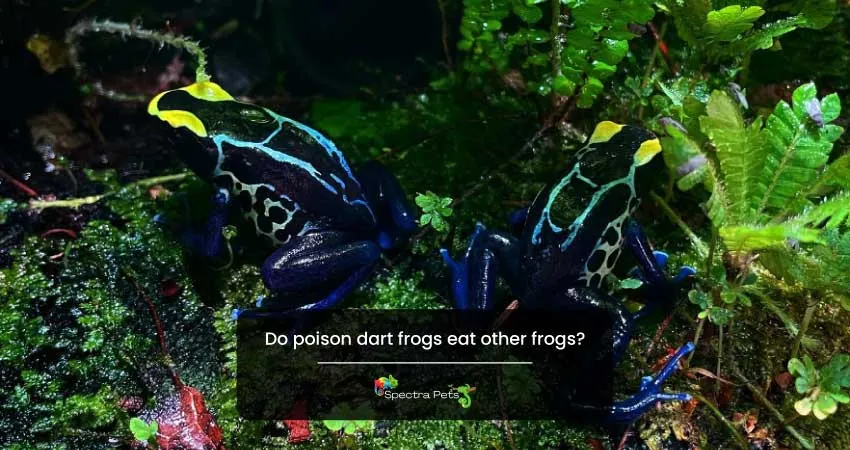
Image Credit: Instagram, poison.dart.frogs
No dart frogs have no record of eating other frogs in their juvenile and adult stages. However, in their tadpole stage, they can eat their siblings often.
Will dart frogs eat fruit?
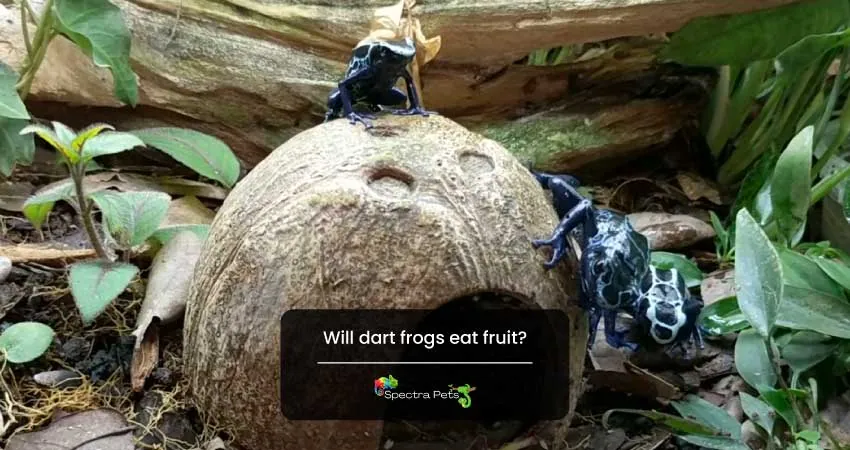
Image Credit: Youtube, The Dart Frog Queen
By nature poison dart frogs are insectivores and their main meal includes a long list of tiny insects. So they never eat any kind of fruit in the wild.
How long can a dart frog go without eating?
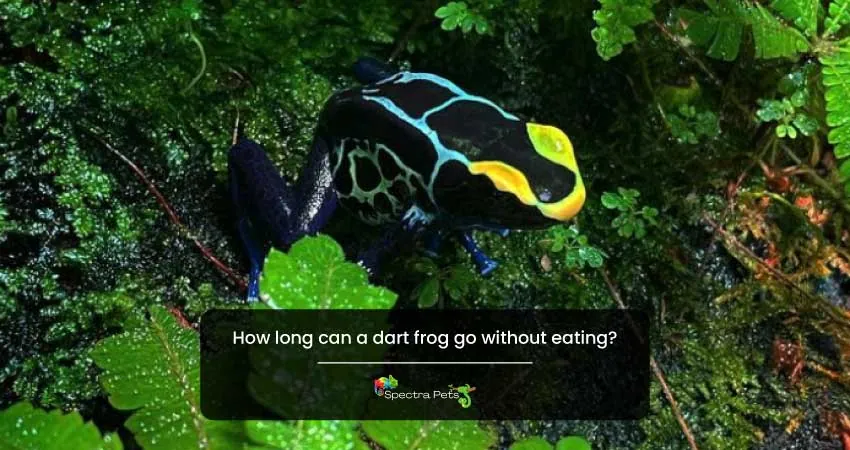
Image Credit: Instagram, poison.dart.frogs
It’s not uncommon in nature for animals to go without any food for a long time due to heavy rainfall or other natural calamities.
In wild, a poison dart frog can live up to 3-4 weeks without any single food. Though they are extremely good at hunting when their meals do not show up due to bad weather then they have to live without food.
Wrapping up
Dart frogs are quite lucky in one sense. Because they get most of their nutrients and vitamins from the rich insects thriving in the deep rainforest.
Moreover, Rainforest is one the hub of world biodiversity so these magnificent creatures eat a mindblowing diet in this amazing habitat.
Hopefully, this post opened a new view and added more knowledge about dart frogs’ diet in the rainforest.
